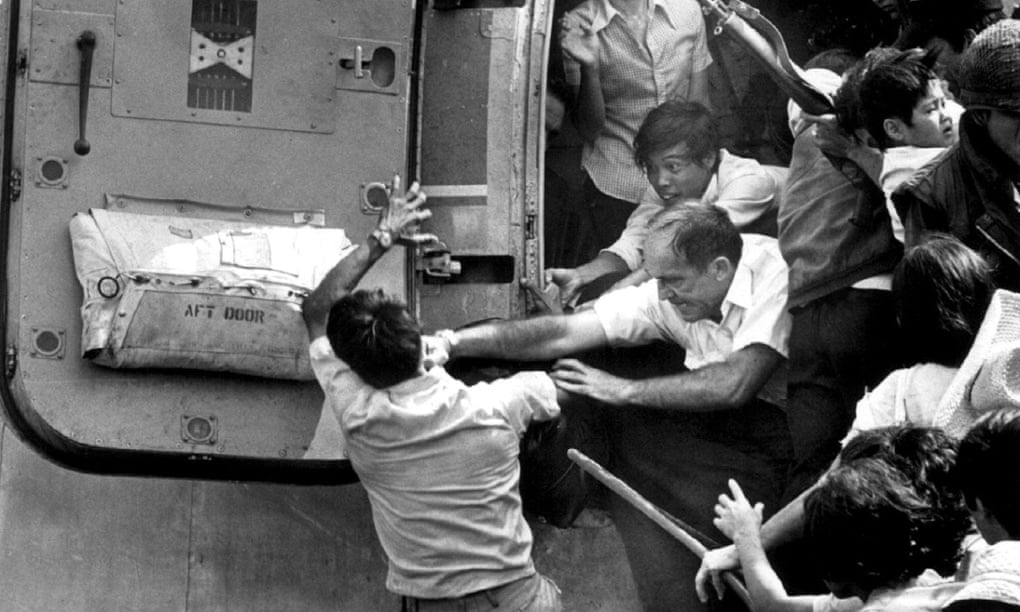
A man tries to board the last US helicopter to leave Saigon after the end of the Vietnam war in April 1975: photo by Hoang Van Cuong/Reuters via the Guardian, 20 April 2015
The land was there before us
Was the land. Then things
Began happening fast. Because
The bombs us have always work
Sometimes it makes me think
God must be one of us. Because
Us has saved the world. Us gave it
A particular set of regulations
Based on 1) undisputable acumen.
2) carnivorous fortunes, delicately
Referred to here as “bull market”
And (of course) other irrational factors
Deadly smoke thick over the icecaps,
Our man in Saigon Lima Tokyo etc etc
irrational factors / thick over the ice caps
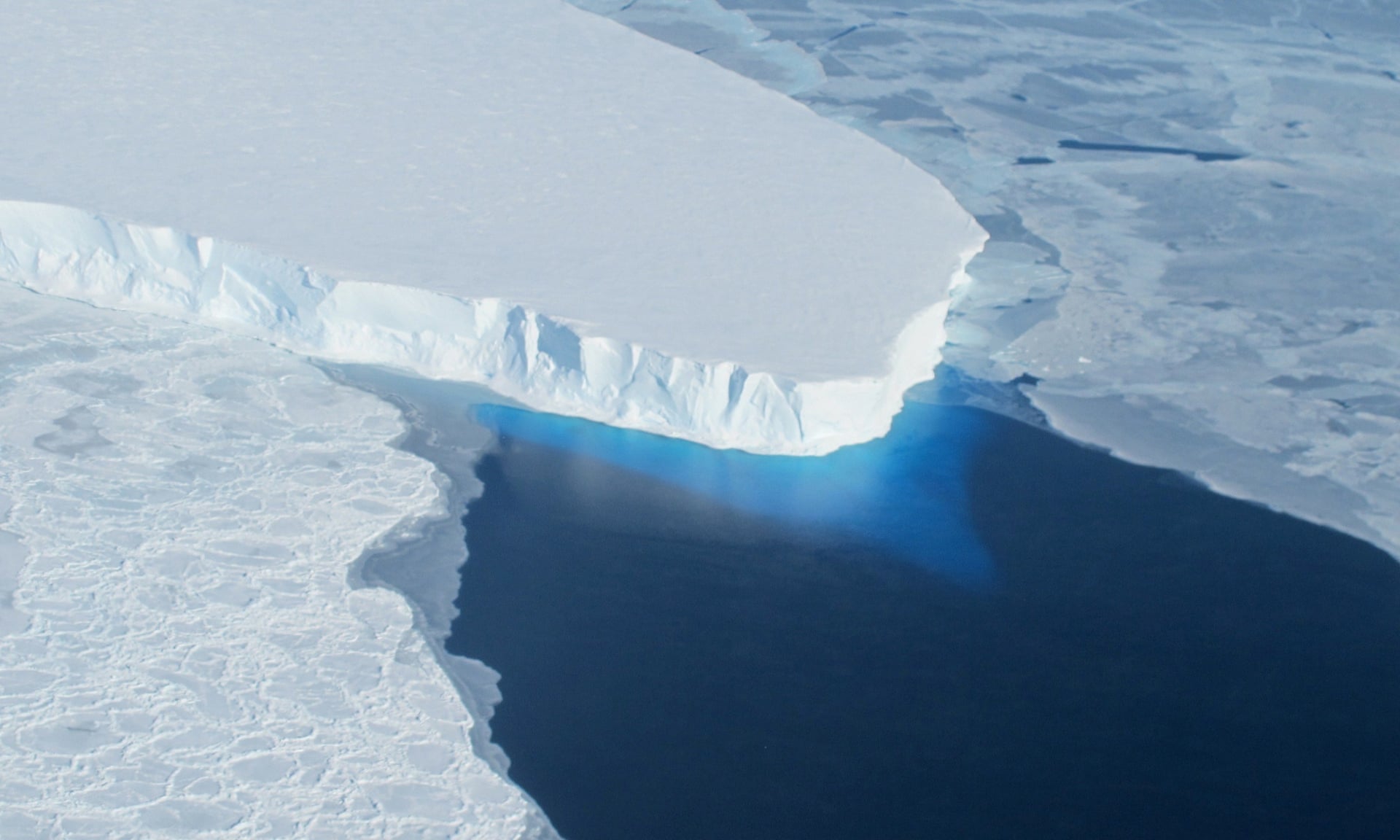
This undated photo courtesy of NASA shows Thwaites Glacier in Western Antarctica: photo by AFP via The Guardian, 14 January 2015
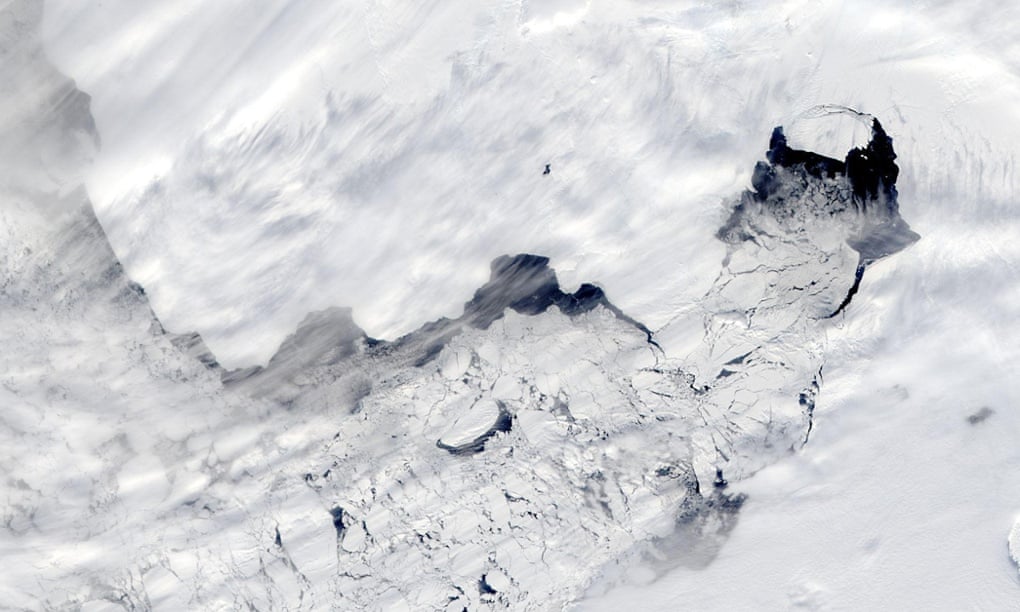
Satellite view of a large iceberg separating from Antarctica’s Pine Island Glacier, where ice loss has doubled in speed over the last 20 years: photo by MODIS/Aqua/NASA via the Guardian, 26 March 2015

This undated photo courtesy of NASA shows Thwaites Glacier in Western Antarctica: photo by AFP via The Guardian, 14 January 2015

Satellite view of a large iceberg separating from Antarctica’s Pine Island Glacier, where ice loss has doubled in speed over the last 20 years: photo by MODIS/Aqua/NASA via the Guardian, 26 March 2015
The bombs us have always work
US-led air strikes targeting #IS militants kill dozens of civilians in #Syria, activists say: image via BBC News (World) @ BBCWorld, 2 May 2015
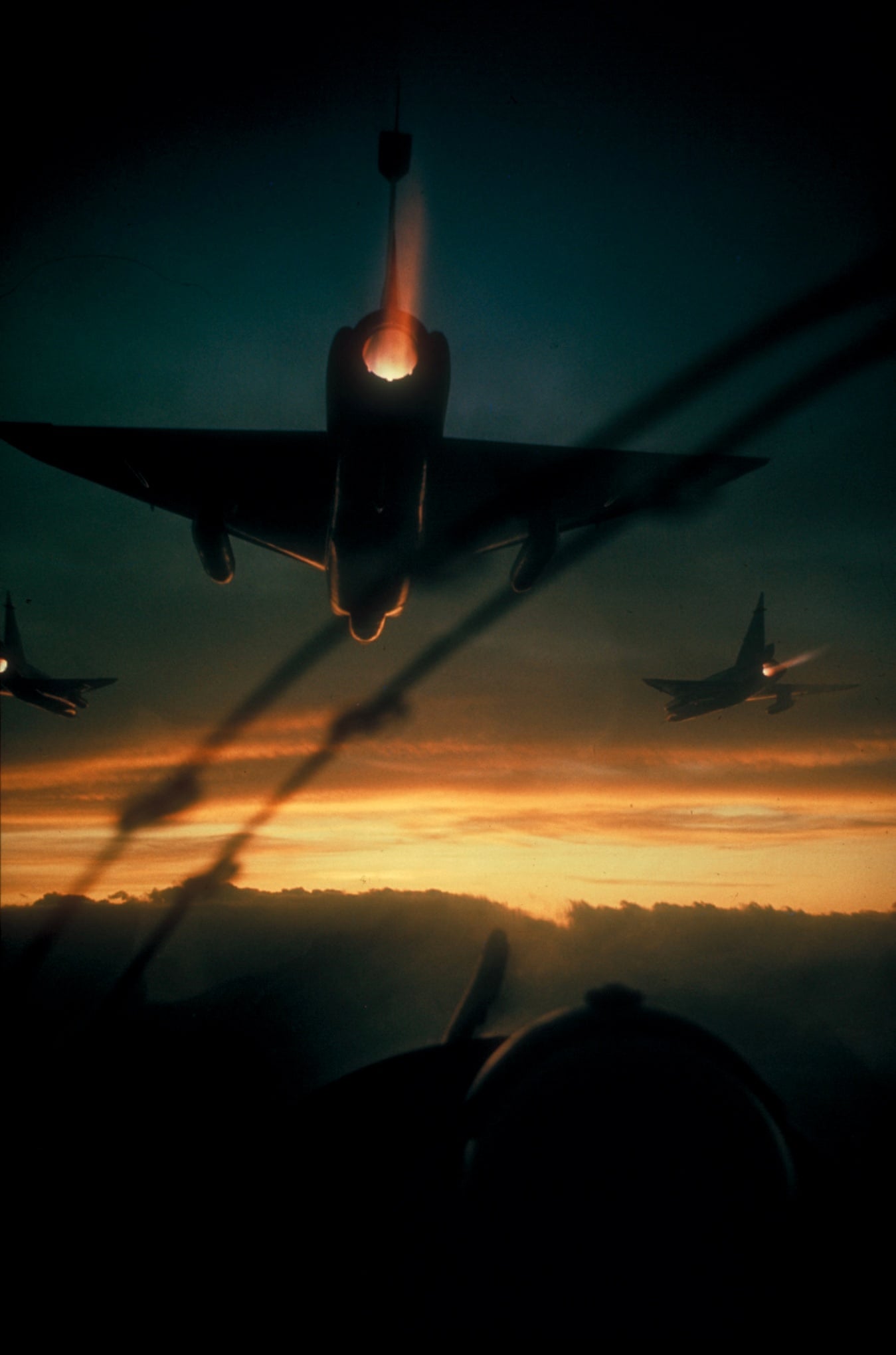
1966: American F-102 interceptor fighters fly a dawn patrol: photo by Larry Burrows/Time & Life Pictures via The Guardian, 28 April 2015
delicately Referred to here as “bull market”
Celebrating the Nasdaq all time highs with a nice Margaux from 2000 #BullMarket #DateNight: image via Jon Boorman @JBoorman, 25 April 2015
And let's not forget the Dow, with Dow's 20 year Tawny. #BullMarket: image via Jon Boorman @JBoorman, 25 April 2015
#bullmarket even in this snow. #wallstreet #iloveny #nyse #newyork #travel #alphasigmarho : image via Kase Angela @KaseSwag1021, 20 March 2015
Last Mon marked 6 yrs in a #BullMarket. Ask our advisors about preparing for what’s next.: image via Money Concepts @MoneyConcepts, 16 March 2015

It's time to #GrindNShine. The #BullMarket is near. Get prepared, for it is coming soon. #NuStudyingWays #ChompChomp: image via Ivan Law @Gator_Greatness, 24 March 2015

It's time to #GrindNShine. The #BullMarket is near. Get prepared, for it is coming soon. #NuStudyingWays #ChompChomp: image via Ivan Law @Gator_Greatness, 24 March 2015It's time to #GrindNShine. The #BullMarket is near. Get prepared, for it is coming soon. #NuStudyingWays #ChompChomp: image via Ivan Law @Gator_Greatness, 24 March 2015

It's time to #GrindNShine. The #BullMarket is near. Get prepared, for it is coming soon. #NuStudyingWays #ChompChomp: image via Ivan Law @Gator_Greatness, 24 March 2015

It's time to #GrindNShine. The #BullMarket is near. Get prepared, for it is coming soon. #NuStudyingWays #ChompChomp: image via Ivan Law @Gator_Greatness, 24 March 2015
God must be one of us
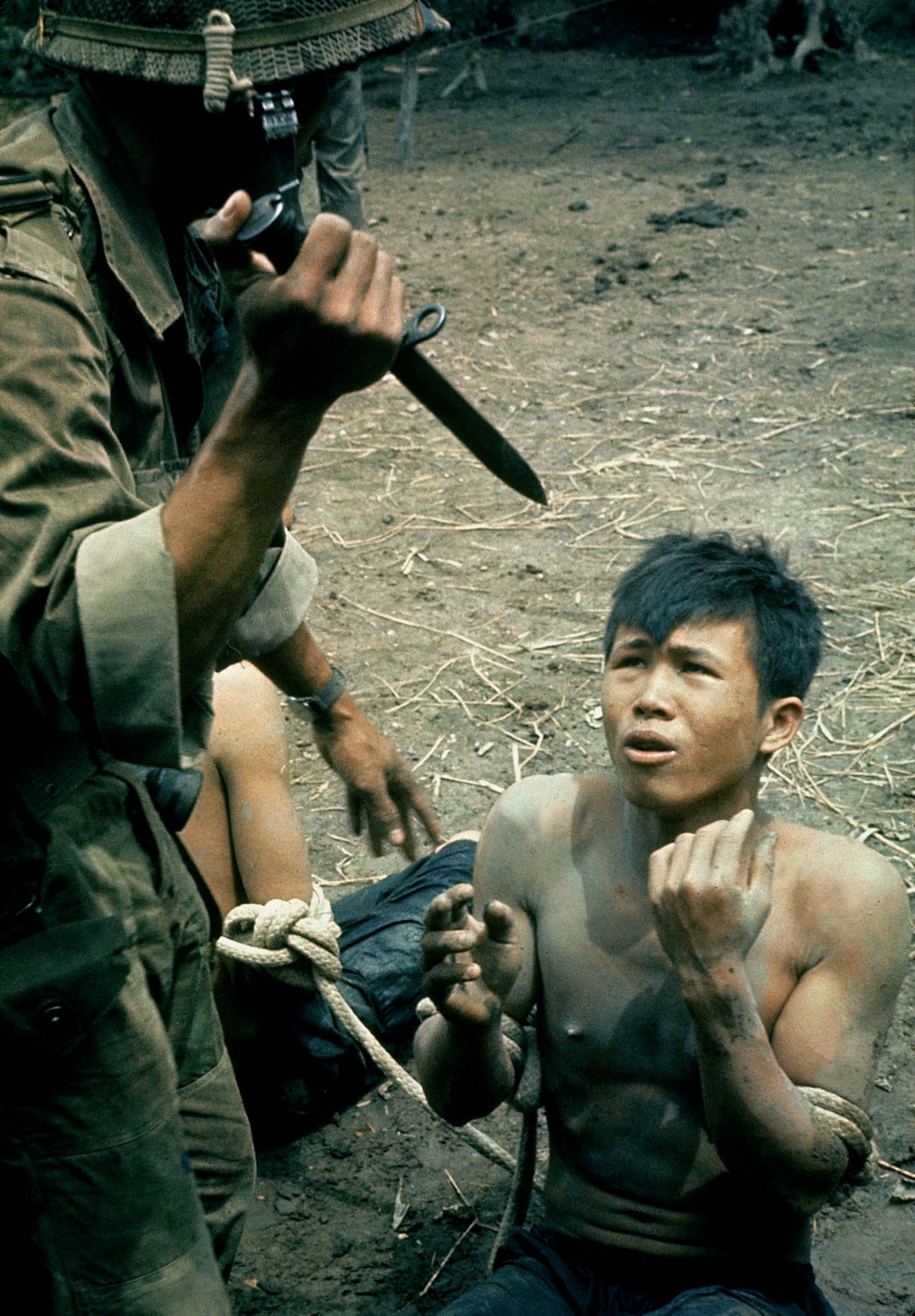
1962. A bayonet-wielding South Vietnamese paratrooper threatens a captured Việt Cộng suspect during an interrogation: photo by Larry Burrows/Time & Life Pictures via The Guardian, 28 April 2015

Exhausted South Vietnamese
soldiers sleep on a US Navy troop carrier taking them back to the
provincial capital of Ca Mau in August 1962. The infantry unit had been
on a four-day operation against the Vietcong in swamplands at the
southern tip of the country: photo by Horst Faas/AP via the Guardian, 23 April 2015
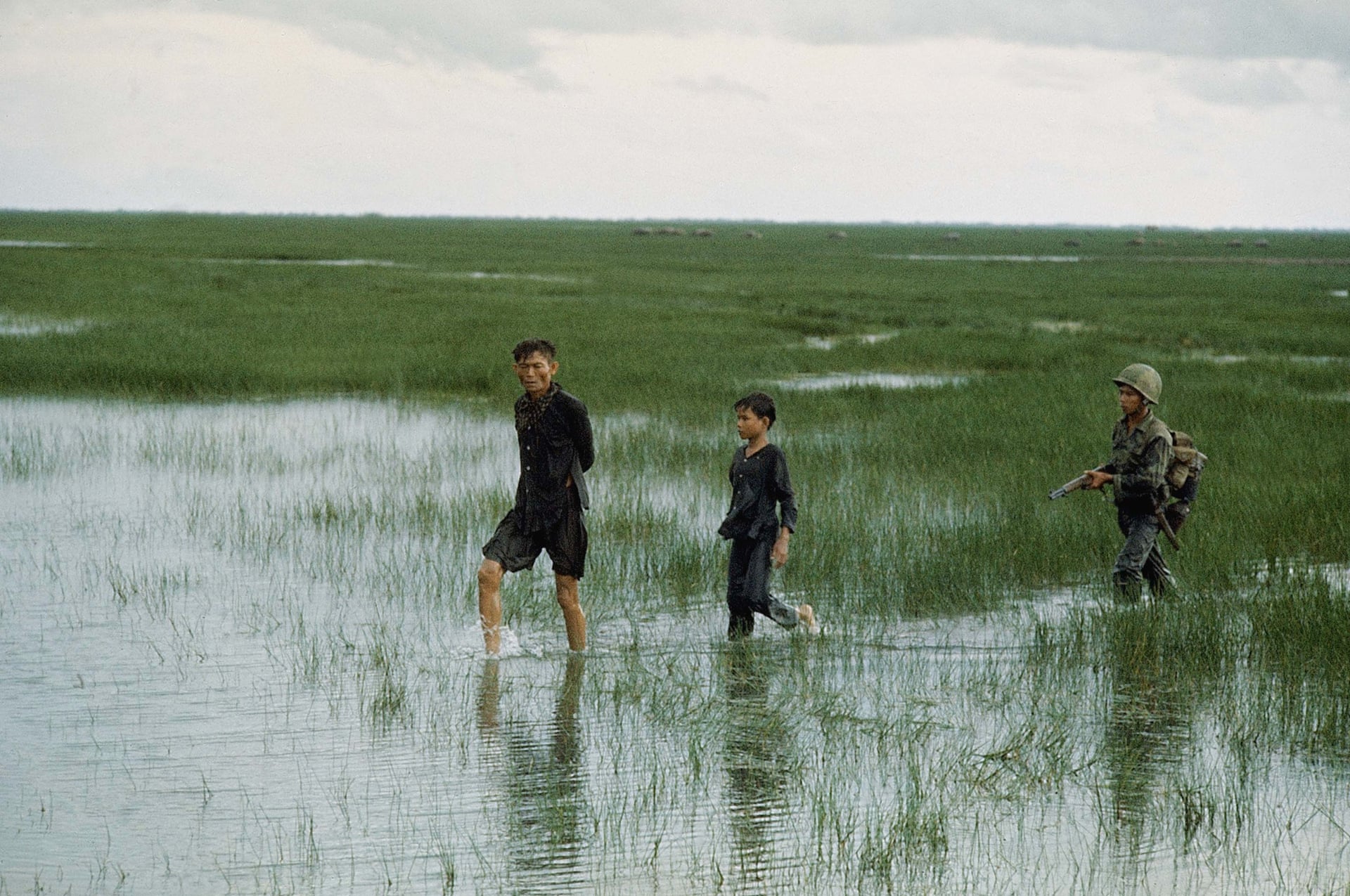
1962. A South Vietnamese soldier escorts a captured man and boy suspected of being Việt Cộng, having just flushed them out of a paddy field where they were hiding: photo by Larry Burrows/Time & Life Pictures via The Guardian, 28 April 2015
Our man in Saigon

In the first of a series of self-immolations by Buddhist monks, Thich Quang Duc burns himself to death on a Saigon street to protest persecution of Buddhists by the South Vietnamese government on 11 June 1963. The photograph aroused worldwide outrage and hastened the end of the Ngo Dinh Diem government. With the photograph on his Oval Office desk, President Kennedy remarked to his ambassador: “We’re going to have to do something about that regime.": photo by Malcolm Browne/AP via the Guardian, 23 April 2015

Buddhist monks and women pull at a barbed-wire barricade that was set up in front of Saigon’s Giac Minh Pagoda to halt a demonstration on 17 July 1963. Police wielding clubs injured at least 50 people during the protest, one of many during this period by Buddhists opposed to the Diem regime. The following month, secret police raided temples throughout the country, an act that only heightened anger against the government: photo by Horst Faas/AP via the Guardian, 23 April 2015
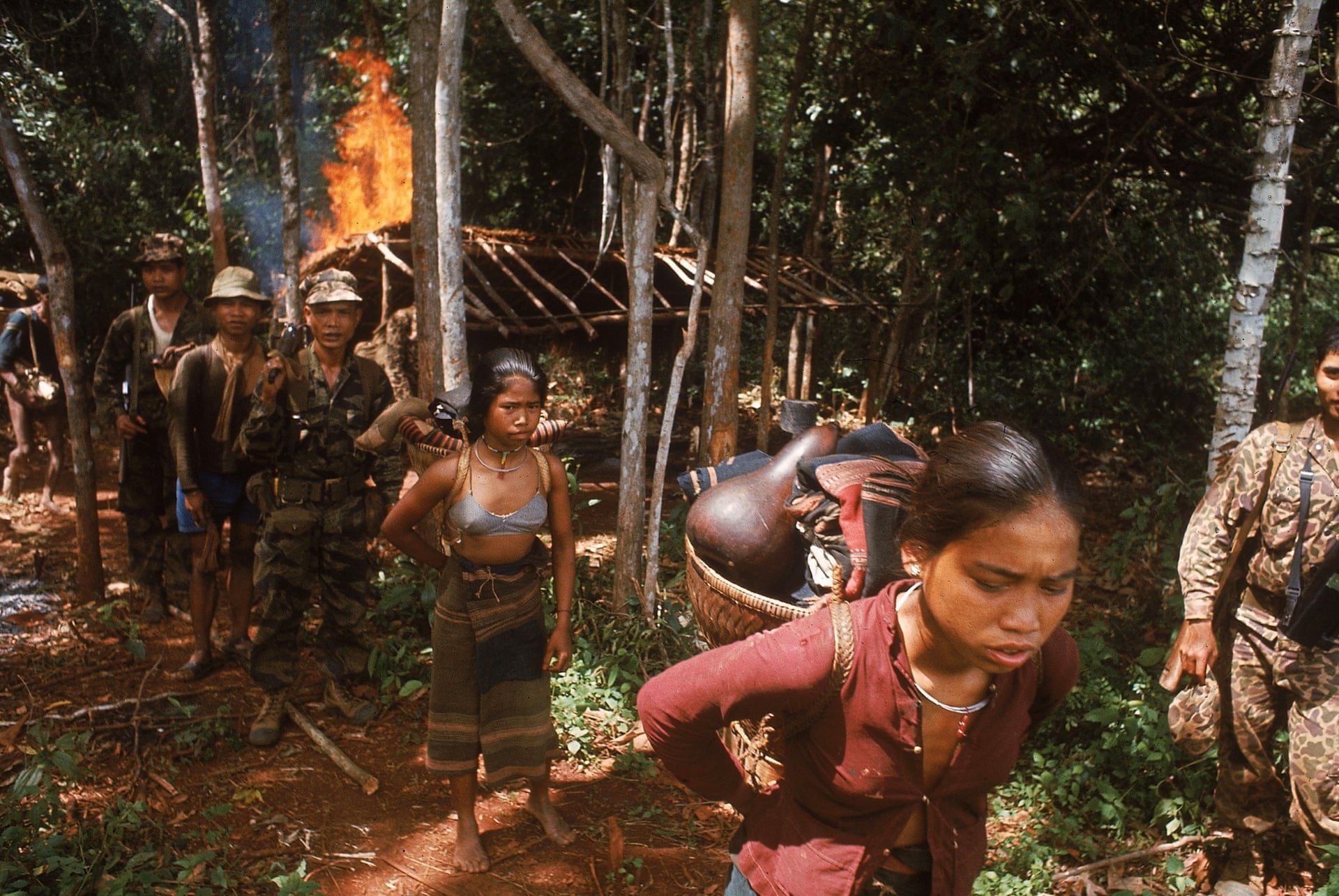
1964. US and South Vietnamese forces evict prostitutes from a suspected Việt Cộng village after setting it alight: photo by Larry Burrows/Time & Life Pictures via The Guardian, 28 April 2015

A distraught father holds the
body of his child as South Vietnamese rangers look down from their
armoured vehicle on 19 March 1964. The child was killed as government
forces pursued guerrillas into a village near the Cambodian border. From
the portfolio by AP photographer Horst Faas that received the 1965
Pulitzer prize for photography: photo by Horst Faas/AP via the Guardian, 23 April 2015
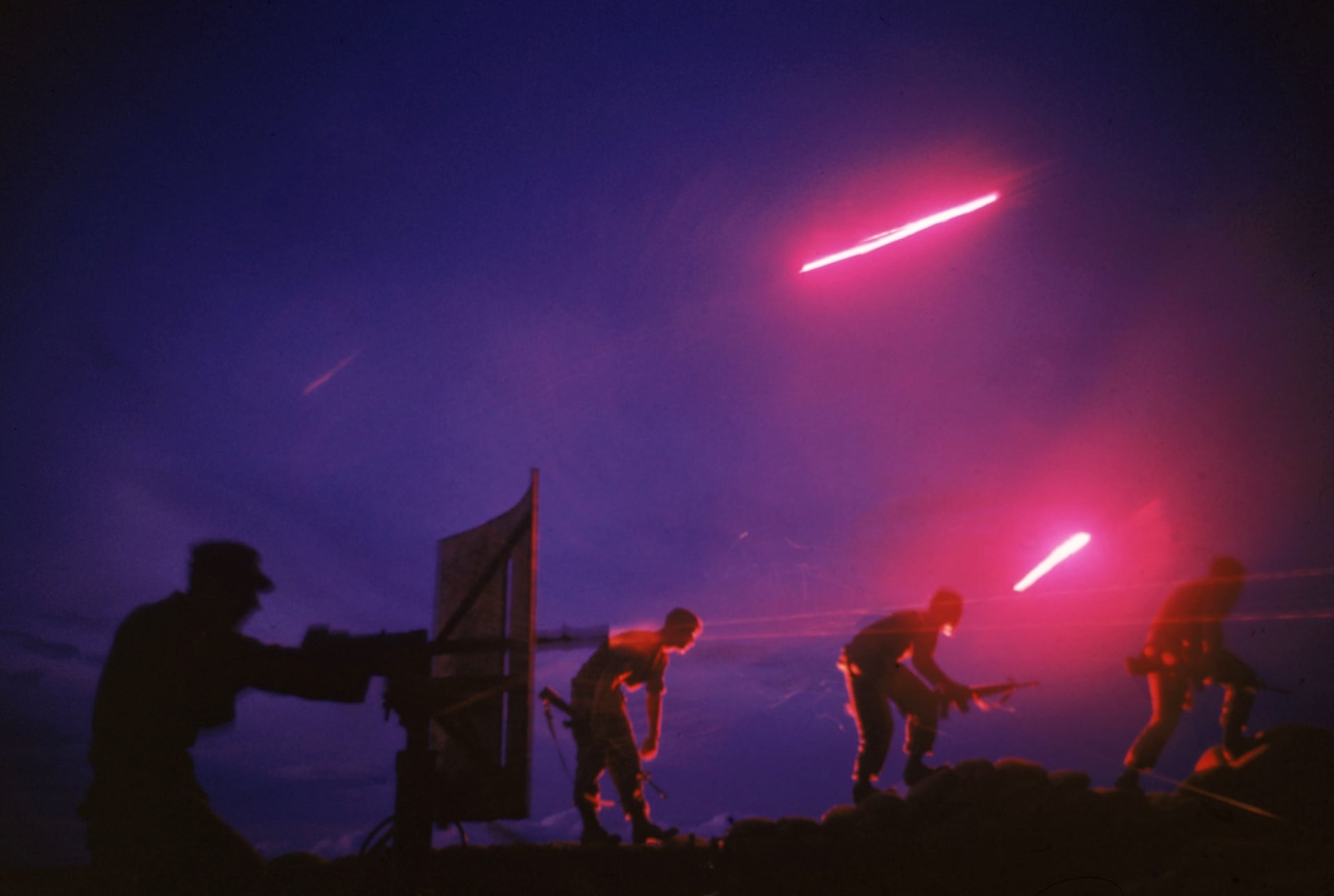
1964. Tracer fire lights the night sky as US and South Vietnamese forces conduct operations: photo by Larry Burrows/Time & Life Pictures via The Guardian, 28 April 2015
Because
Us has saved the world

Vietnamese troops and their US advisers resting in the jungle near the town of Binh Gia, 40 miles east of Saigon, in January 1965: photo by Horst Faas/AP via the Guardian, 20 April 2015

Hovering US Army helicopters pour machine-gun fire into the tree line to cover the advance of South Vietnamese ground troops as they attack a Vietcong camp 18 miles north of Tay Ninh, near the Cambodian border, in March 1965: photo by Horst Faas/AP via the Guardian, 23 April 2015

Under sniper fire, a Vietnamese woman carries a child to safety as US marines storm the village of My Son, near Da Nang, searching for Vietcong insurgents, 25 April 1965. As was typical in such situations, the men of the village had mostly disappeared, and the remaining villagers revealed little when questioned: photo by Eddie Adams/AP via the Guardian, 23 April 2015

An unidentified US soldier wears a hand-lettered slogan on his helmet in June 1965. The soldier was serving with the 173rd Airborne Brigade on defence duty at the Phuoc Vinh airfield: photo by Horst Faas/AP via the Guardian, 23 April 2015
The land was there before us

Bodies of US paratroopers lie near a command post during the battle of An Ninh, 18 September 1965. The paratroopers, of the 1st Brigade, 101st Airborne Division, were hit by heavy fire from guerrillas that began as soon as the first elements of the unit landed. The dead and wounded were later evacuated to An Khe, where the 101st was based. The battle was one of the first of the war between major units of US forces and the Vietcong: photo by Henri Huet/AP via the Guardian, 23 April 2015

US paratroopers of the 2nd
Battalion, 173rd Airborne Brigade, hold their automatic weapons above
water as they cross a river in the rain during a search for Vietcong
positions in the jungle area of Ben Cat on 25 September 1965. The
paratroopers had been combing the area for 12 days with no enemy contact: photo by Henri Huet/AP via the Guardian, 23 April 2015

A South Vietnamese
stretcher-bearer wears a face mask to protect himself from the smell as
he passes the bodies of US and South Vietnamese soldiers killed fighting
the Vietcong in the Michelin rubber plantation, 27 November 1965. More
than 100 bodies were recovered after the Vietcong overran South
Vietnam’s 7th Regiment, 5th Division, killing most of the regiment and
several US advisers. The plantation, situated midway between Saigon and
the Cambodian border, was the scene of frequent fighting throughout the
war.: photo by Horst Faas/AP via the Guardian, 23 April 2015

Actor Carroll Baker snaps her fingers at sailors cheering from the bridge as Bob Hope leads her across a stage on the flight deck of the USS Ticonderoga in December 1965. More than 2,500 sailors saw the Hope troupe’s show aboard the aircraft carrier. The comedian included South Vietnam in his annual holiday-season visits to troops from 1964 to 1972: photo by AP via the Guardian, 23 April 2015

Caught in a sudden monsoon rain, part of a company of about 130 South Vietnamese soldiers moves downriver in sampans during a dawn attack on a Vietcong camp on 10 January 1966. Several guerrillas were reported killed or wounded in the action 13 miles northeast of Can Tho, in the flooded Mekong Delta: photo by Henri Huet/AP via the Guardian, 23 April 2015

Medic Thomas Cole looks up
with his one unbandaged eye as he treats wounded Staff Sergeant Harrison
Pell during a firefight on 30 January 1966. The men belonged to the 1st
Cavalry Division, which was engaged in a battle at An Thi in the
central highlands against combined Vietcong and North Vietnamese forces.
This photograph appeared on the cover of Life magazine on 11 February
1966. Photographer Henri Huet’s coverage of An Thi received the Robert
Capa Gold Medal from the Overseas Press Club: photo by Henri Huet/AP via the Guardian, 23 April 2015
Tokyo...etc...etc
Shopping in #Harajuku #Tokyo: image via DIONYSUS @dionysusdreams, 27 April 2015
Blonde hair don't care! #NewUpdate #KimKardashianHollywood #Tokyo: image via Kim Kardashian West Verified Account @KimKardashian, 28 April 2015

A Godzilla hotel has opened in #Tokyo, obviously: image via Rough Guides @RoughGuides, 29 April 2015
A room with a different kind of view #Tokyo #Godzilla: image via Travel + Leisure @TravlandLeisure, 30 April 2015
#tokyo My favorite building.: image via Shun @TOTALFAT @shun_TF, 2 May 2015

Taylor taking selfies with fans upon arrival at the airport in Japan! #2DaysTil1989WorldTour #Tokyo: image via Taylor Swift Updates @SimplySFans, 3 May 2015

Taylor taking selfies with fans upon arrival at the airport in Japan! #2DaysTil1989WorldTour #Tokyo: image via Taylor Swift Updates @SimplySFans, 3 May 2015

Taylor greeted by fans in Japan over the years! #Tokyo #1DayTil1989WorldTour: image via Taylor Swift Updates @SimplySFans, 4 May 2015

Taylor greeted by fans in Japan over the years! #Tokyo #1DayTil1989WorldTour: image via Taylor Swift Updates @SimplySFans, 4 May 2015

Taylor greeted by fans in Japan over the years! #Tokyo #1DayTil1989WorldTour: image via Taylor Swift Updates @SimplySFans, 4 May 2015

Taylor greeted by fans in Japan over the years! #Tokyo #1DayTil1989WorldTour: image via Taylor Swift Updates @SimplySFans, 4 May 2015
particular set of regulations

1966. The crew of a US AC-47 plane fire 7.62mm GE miniguns on a night mission: photo by Larry Burrows/Time & Life Pictures via The Guardian, 28 April 2015
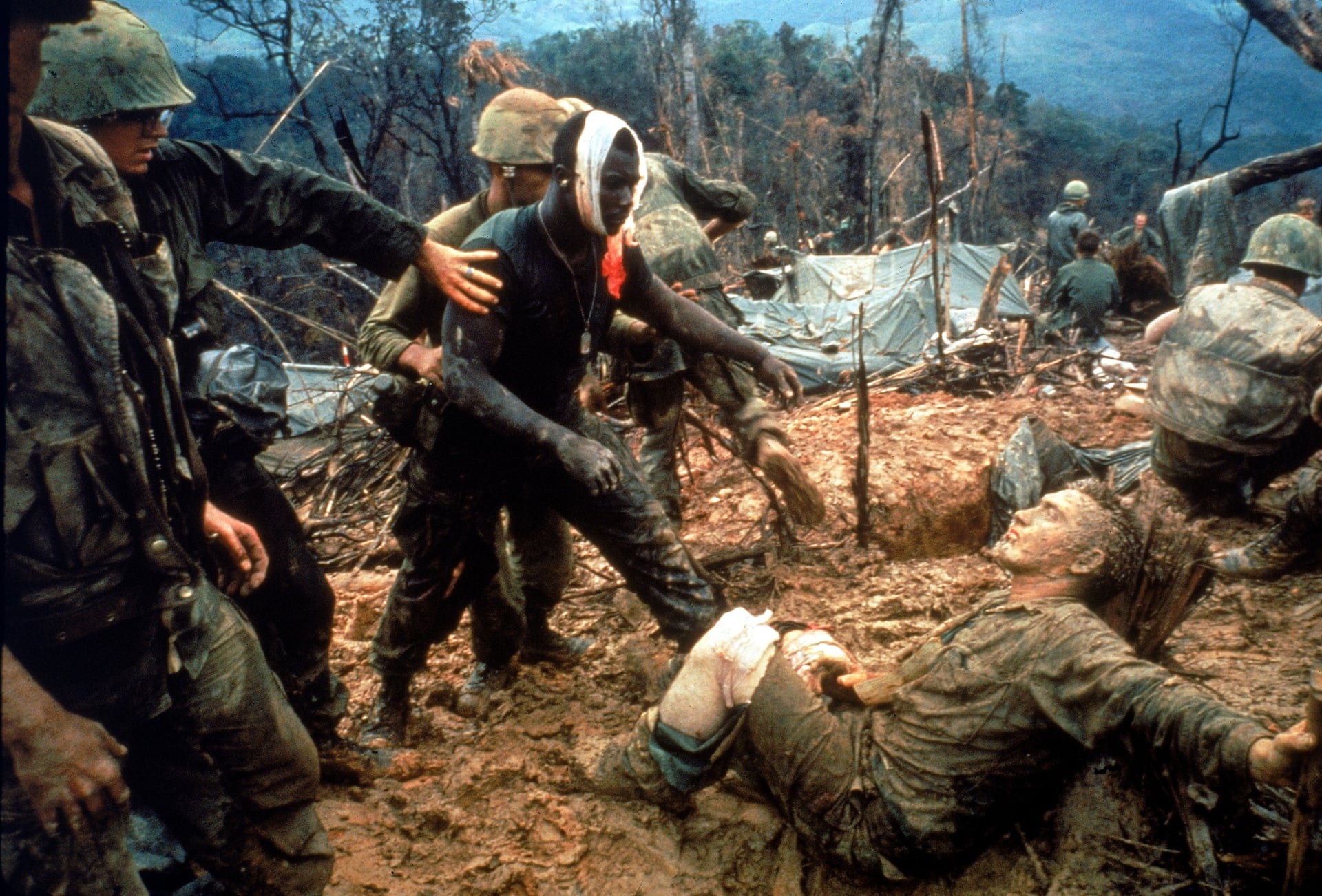
1966. Reaching Out: wounded US marine Jeremiah Purdie (centre) is led past stricken comrades after a fierce firefight for control of Hill 484 in South Vietnam: photo by Larry Burrows/Time & Life Pictures via The Guardian, 28 April 2015
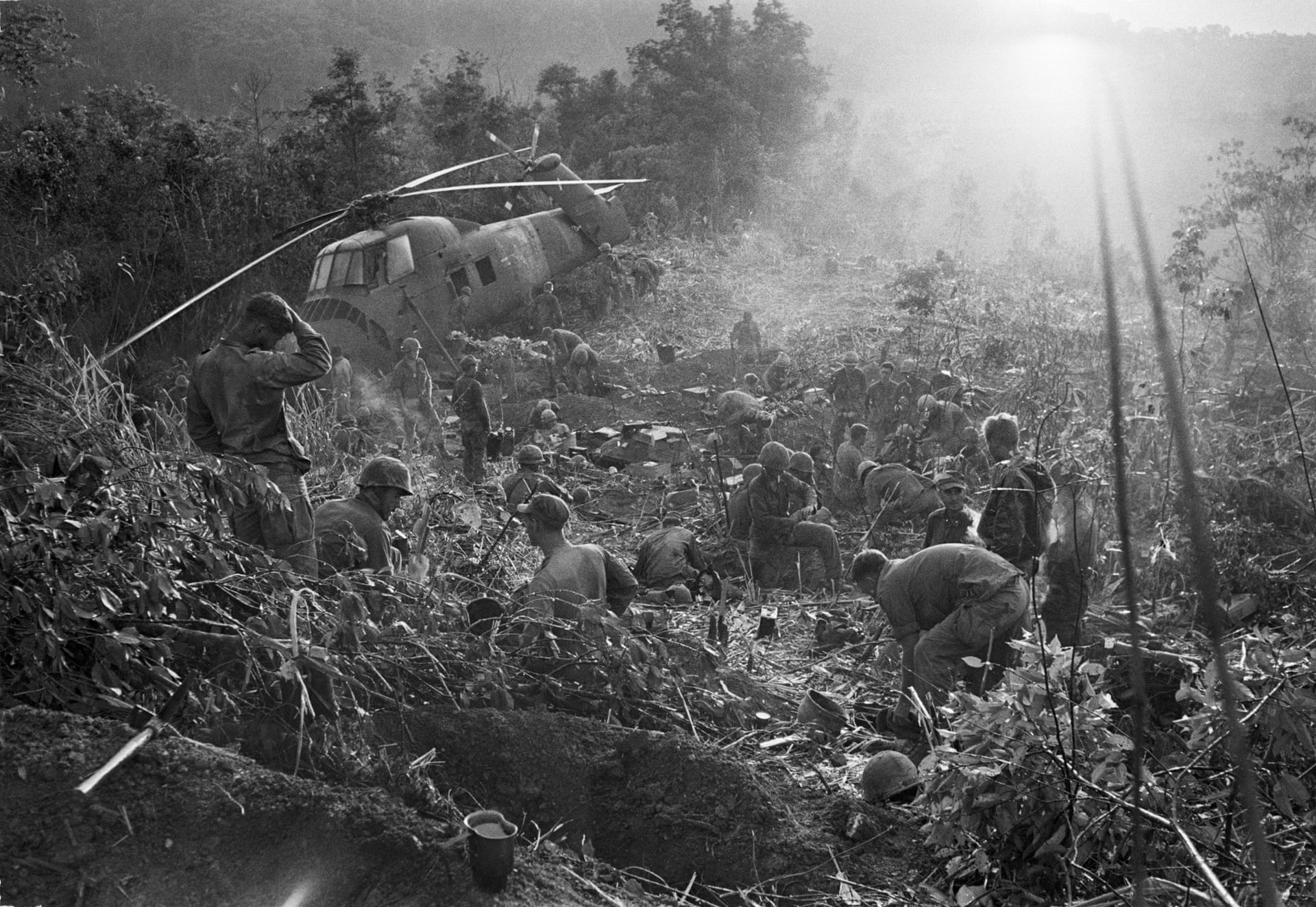
Marines emerge from their foxholes south of the DMZ after a third night of fighting against North Vietnamese troops in September 1966. The helicopter on the left was shot down when it came in to resupply the unit: photo by Henri Huet/AP via the Guardian, 23 April 2015
carnivorous fortunes

A 1st Cavalry Division soldier throws a rice basket on to the flames as his unit sweeps through a village near Tam Ky, 350 miles north-east of Saigon, on 27 October 1967. A peasant woman had tried to salvage the basket from the burning house, but US troops were intent on destroying anything that might be of value to the Vietcong: photo by Dang Van Phuoc/AP via the Guardian, 23 April 2015
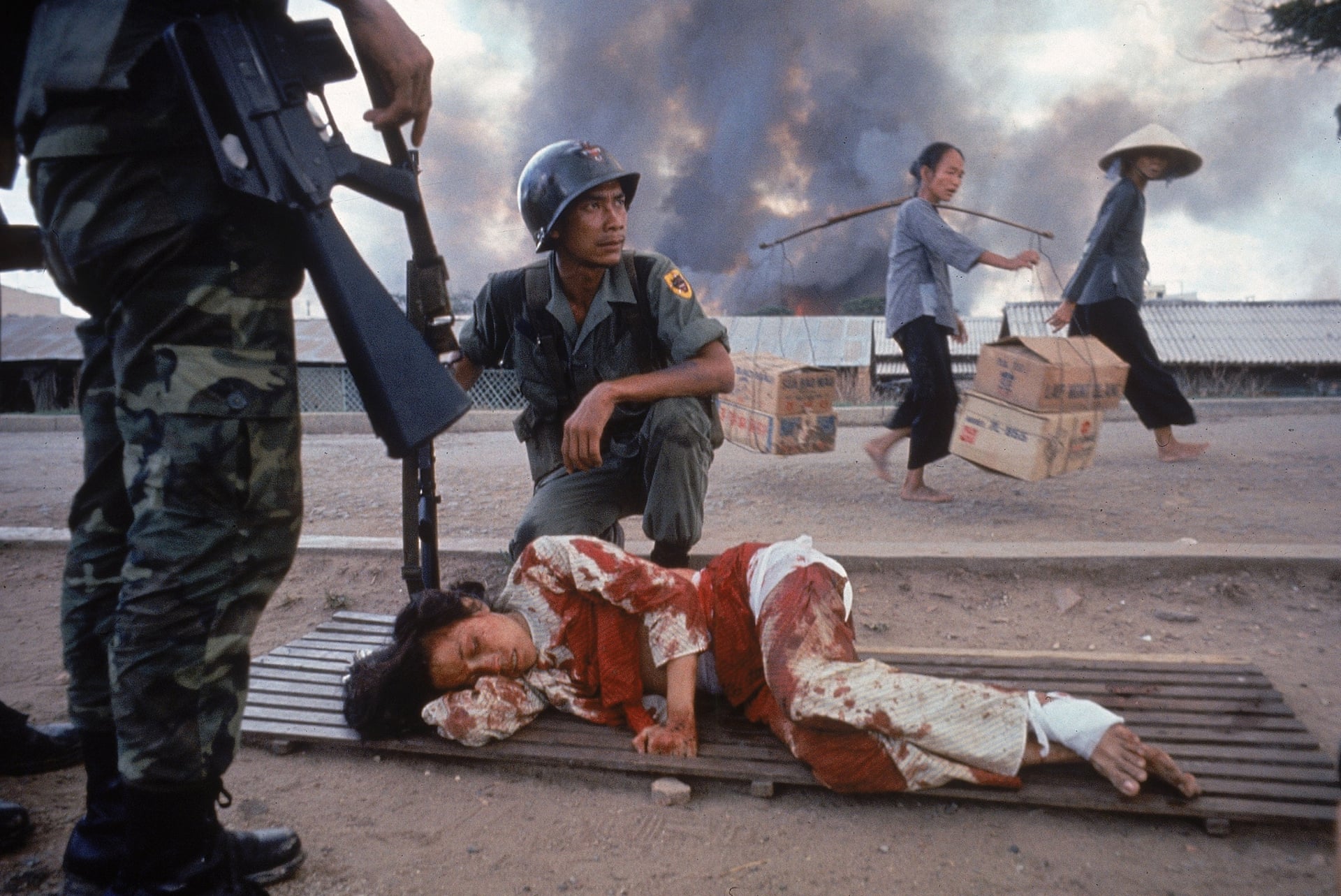
1968.
A South Vietnamese soldier crouches beside a badly bleeding woman
while awaiting medical aid during an attack by the Việt Cộng: photo by Larry Burrows/Time & Life Pictures via The Guardian, 28 April 2015

Gen Nguyen Ngoc Loan, South
Vietnamese chief of the national police, fires his pistol into the head
of suspected Vietcong official Nguyen Van Lem on a Saigon street early
on in the Tet offensive, on 1 February 1968. Photographer Eddie Adams
reported that after the shooting, Loan approached him and said: “They
killed many of my people, and yours too,” then walked away. This
photograph received the 1969 Pulitzer prize for spot news photography: photo by Eddie Adams/AP via the Guardian, 23 April 2015

Marines transport their
seriously wounded atop a US army tank through the streets of Hue toward a
helicopter evacuation point on 17 February 1968. Tanks were the only
vehicles able to travel the streets because of rubble from buildings
destroyed during the still-ongoing Tet offensive. The marines came under
sniper fire several times on the journey: photo by AP via the Guardian, 23 April 2015
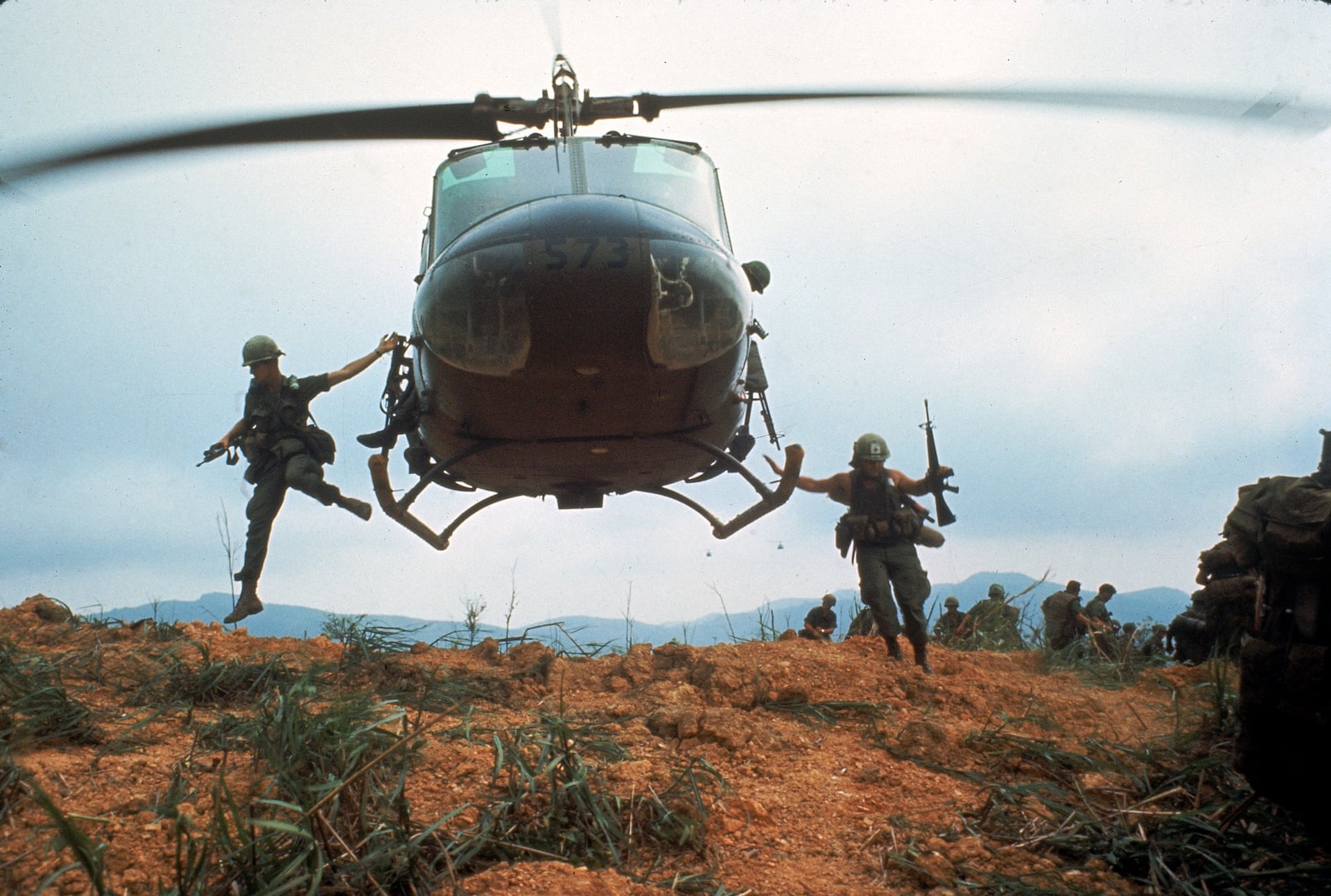
1968. US soldiers jump from a helicopter during Operation Pegasus, a failed attempt to lift the siege of Khe Sanh: photo by Larry Burrows/Time & Life Pictures via The Guardian, 28 April 2015
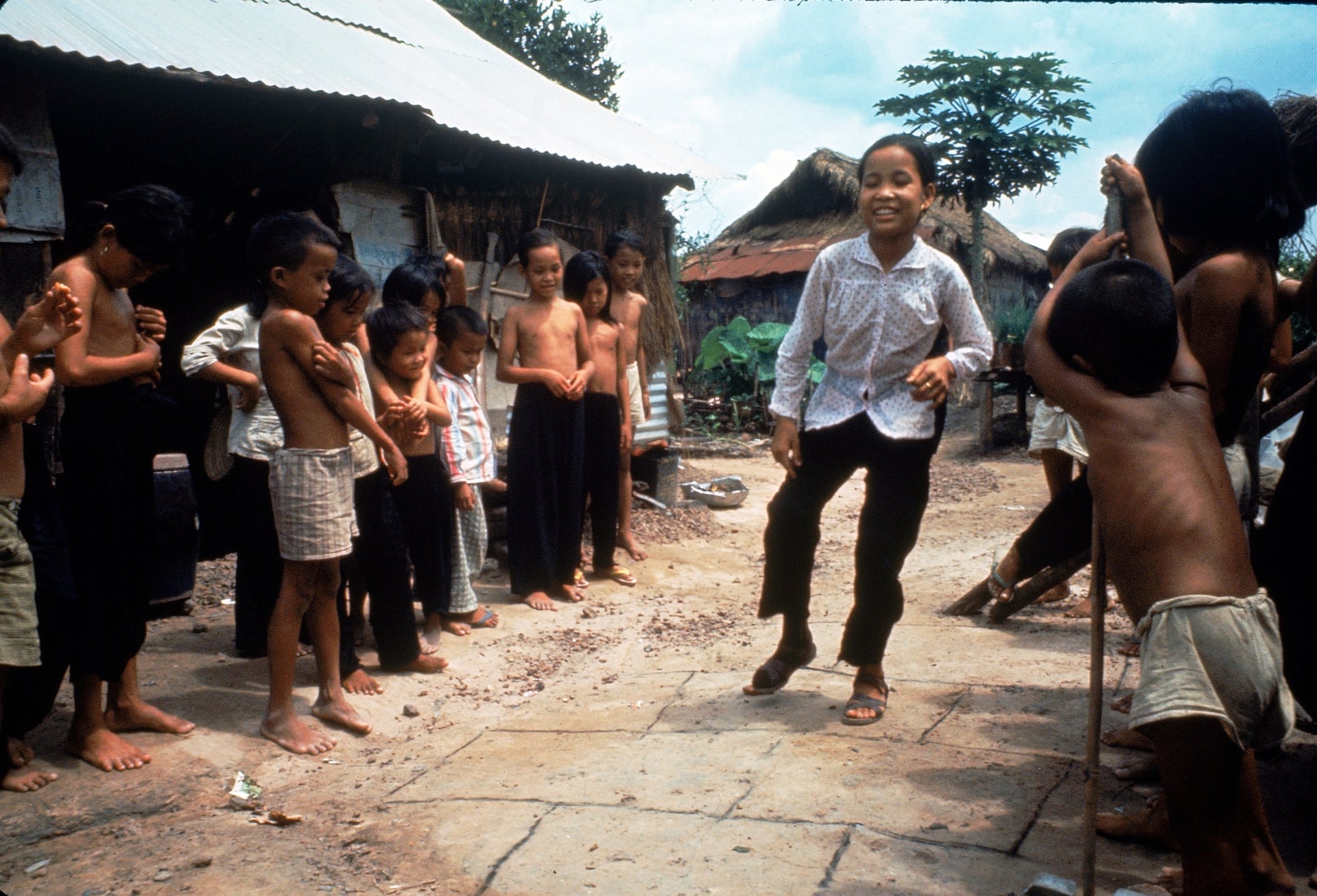
1968. Nguyen Thi Tron, who was wounded by gunfire from an American helicopter, tries out her new artificial leg in a game of hopscotch: photo by Larry Burrows/Time & Life Pictures via The Guardian, 28 April 2015

A woman mourns over the body of her husband after identifying him by his teeth and covering his head with her conical hat. The man’s body was found with 47 others in a mass grave near Hue on 11 April 1969. The victims were believed to be killed during the insurgent occupation of Hue as part of the Tet offensive: photo by Horst Faas/AP via the Guardian, 23 April 2015
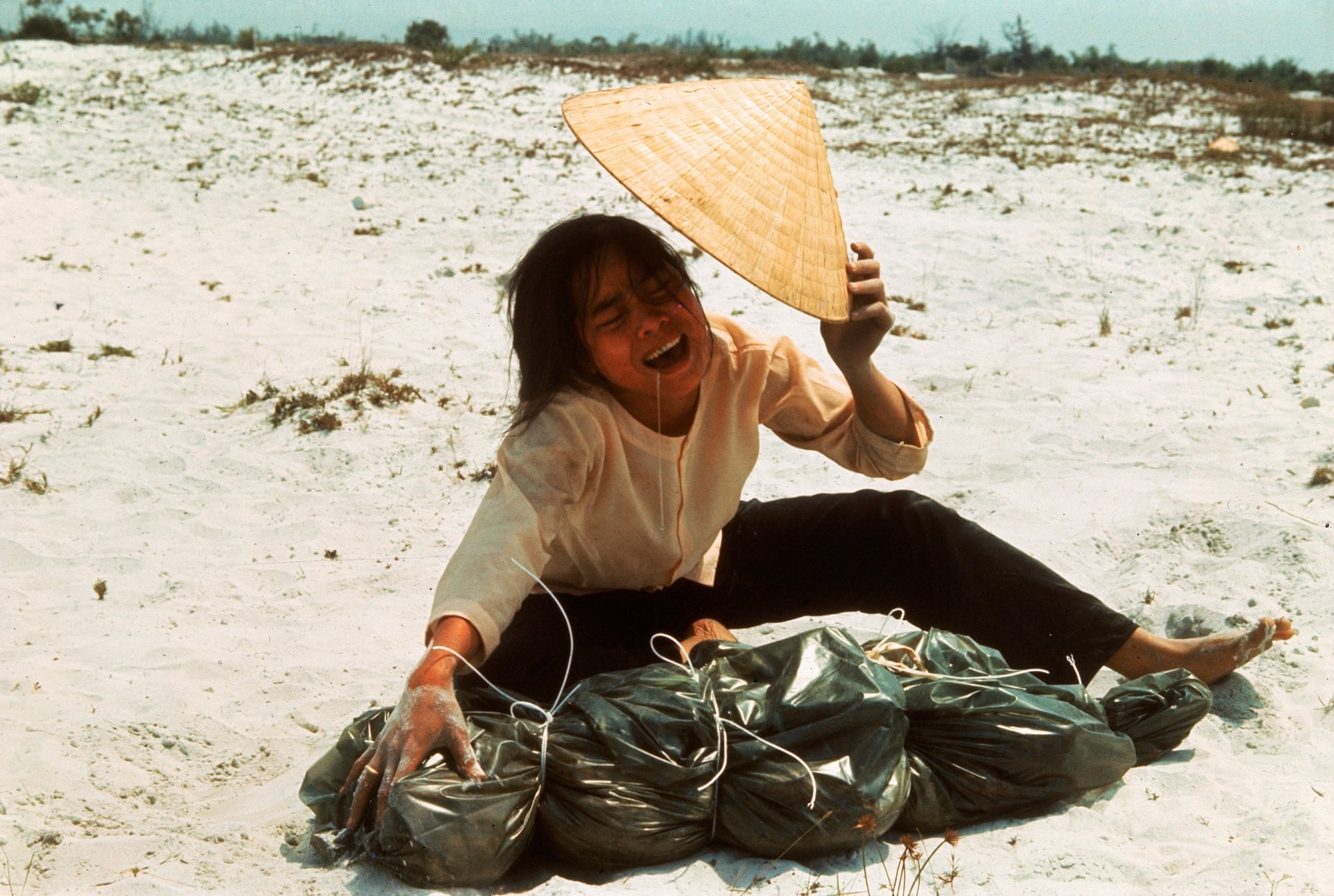
1968. A grieving widow cries over a body bag containing the remains of her husband, found in a mass grave containing civilians killed by Việt Cộng during the Tet offensive of 1968: photo by Larry Burrows/Time & Life Pictures via The Guardian, 28 April 2015
Sometimes it makes me think
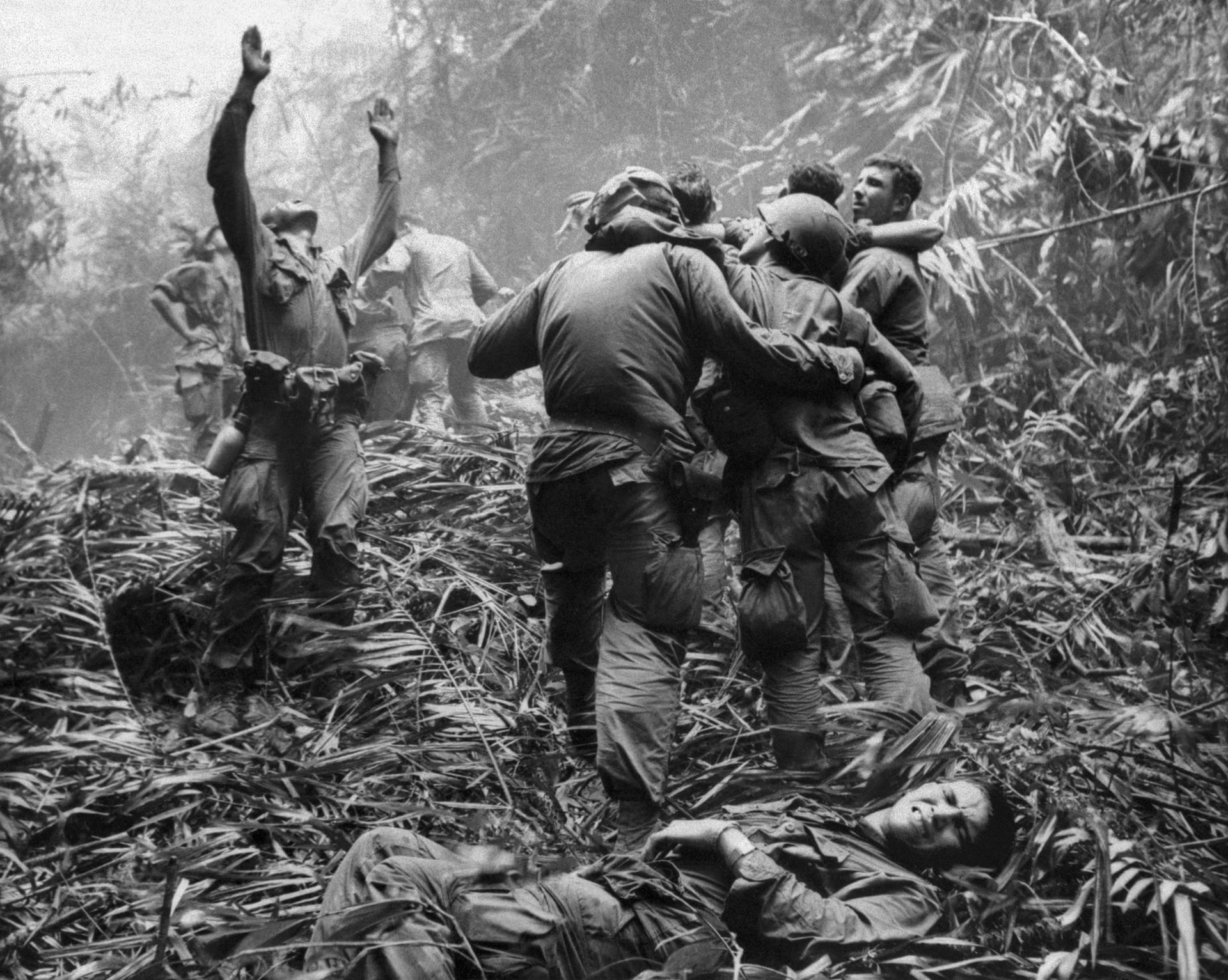
As fellow troopers aid wounded comrades, a paratrooper of A Company, 101st Airborne Division, guides a medevac helicopter through the jungle foliage to pick up casualties suffered during a five-day patrol near Hue in April 1968: photo by Art Greenspon/AP via The Guardian, 23 April 2015

A 6ft 5in machine gunner with the US 9th Infantry Division is submerged except for his rifle as he crosses a muddy stream in the Mekong delta south of Saigon on 10 September 1968: photo by Henri Huet/AP via the Guardian, 23 April 2015

A US paratrooper, wounded in
the battle for Hamburger Hill, grimaces in pain as he awaits medical
evacuation at base camp near the Laotian border on 19 May 1969: photo by Hugh Van Es/AP via the Guardian, 23 April 2015

1970. Half-dressed US soldiers of the 9th Infantry fire on enemy troops somewhere along the South Vietnamese-Cambodian border: photo by Larry Burrows/Time & Life Pictures via The Guardian, 28 April 2015

GIs of the 3rd Brigade, 101st
Airborne Division, launch into a rock session while surrounded by
symbols of the war: wooden bunkers, helicopter and sandbags, in July
1970. The soldiers were dug in at Firebase Kathryn on a hill south of
the DMZ: photo by Giancarlo Meyer/AP via the Guardian, 23 April 2015
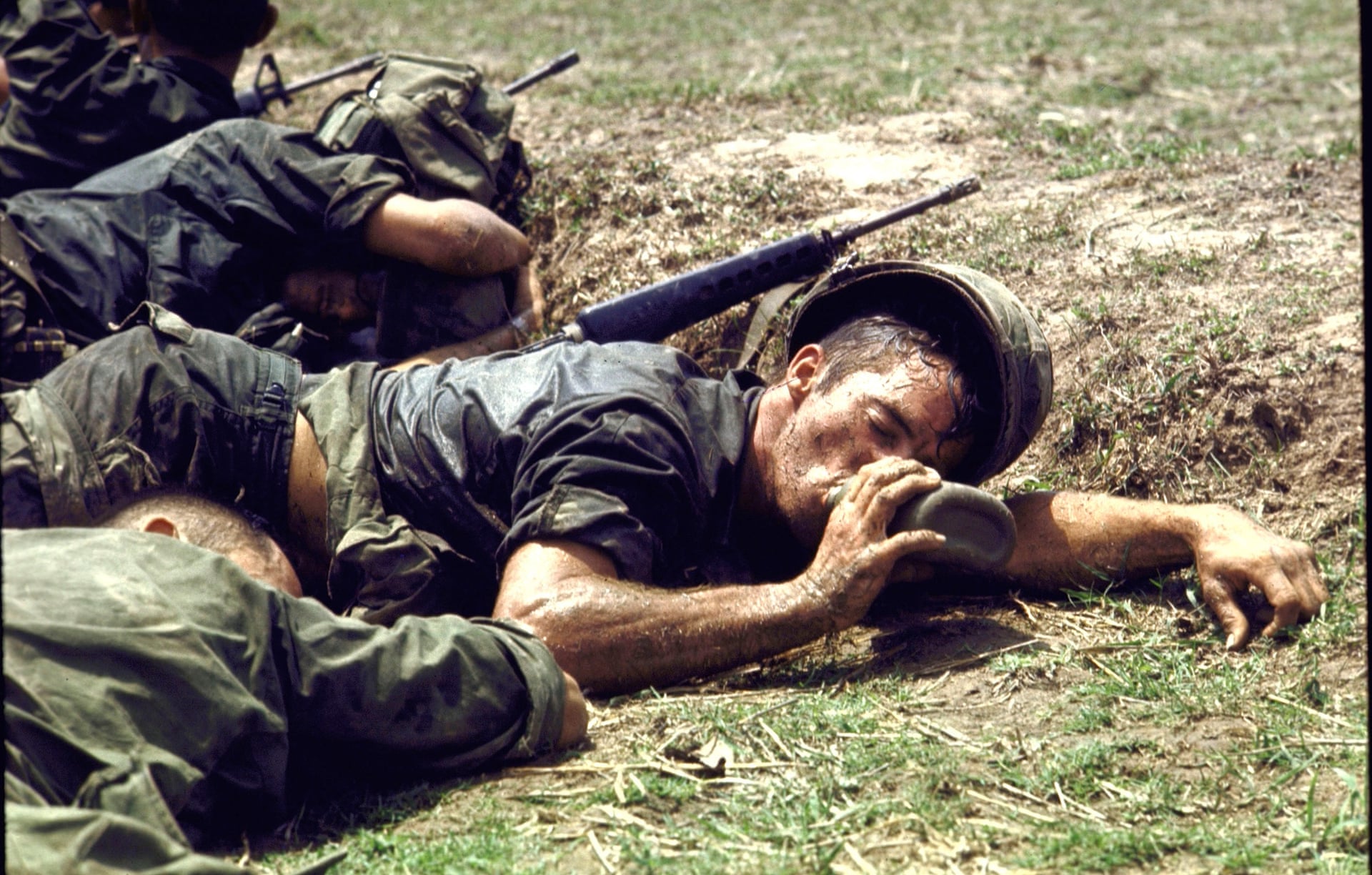
1970. An exhausted US infantryman drinks from his canteen in the Fishhook area of Cambodia: photo by Larry Burrows/Time & Life Pictures via The Guardian, 28 April 2015
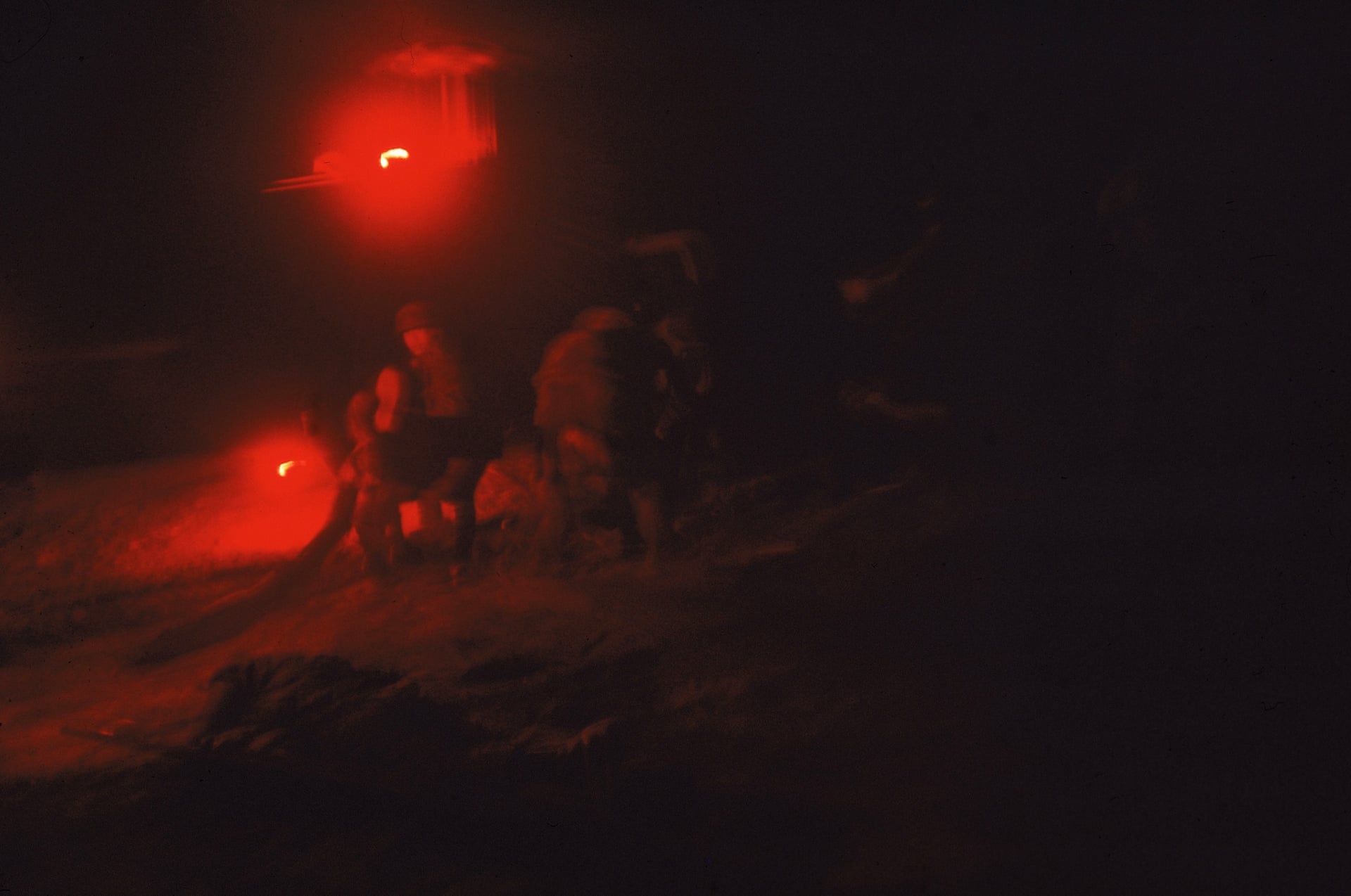
1971. Wounded South Vietnamese soldiers are evacuated during Operation Lam Son 719 in Laos: photo by Larry Burrows/Time & Life Pictures via The Guardian, 28 April 2015
Then things Began happening fast
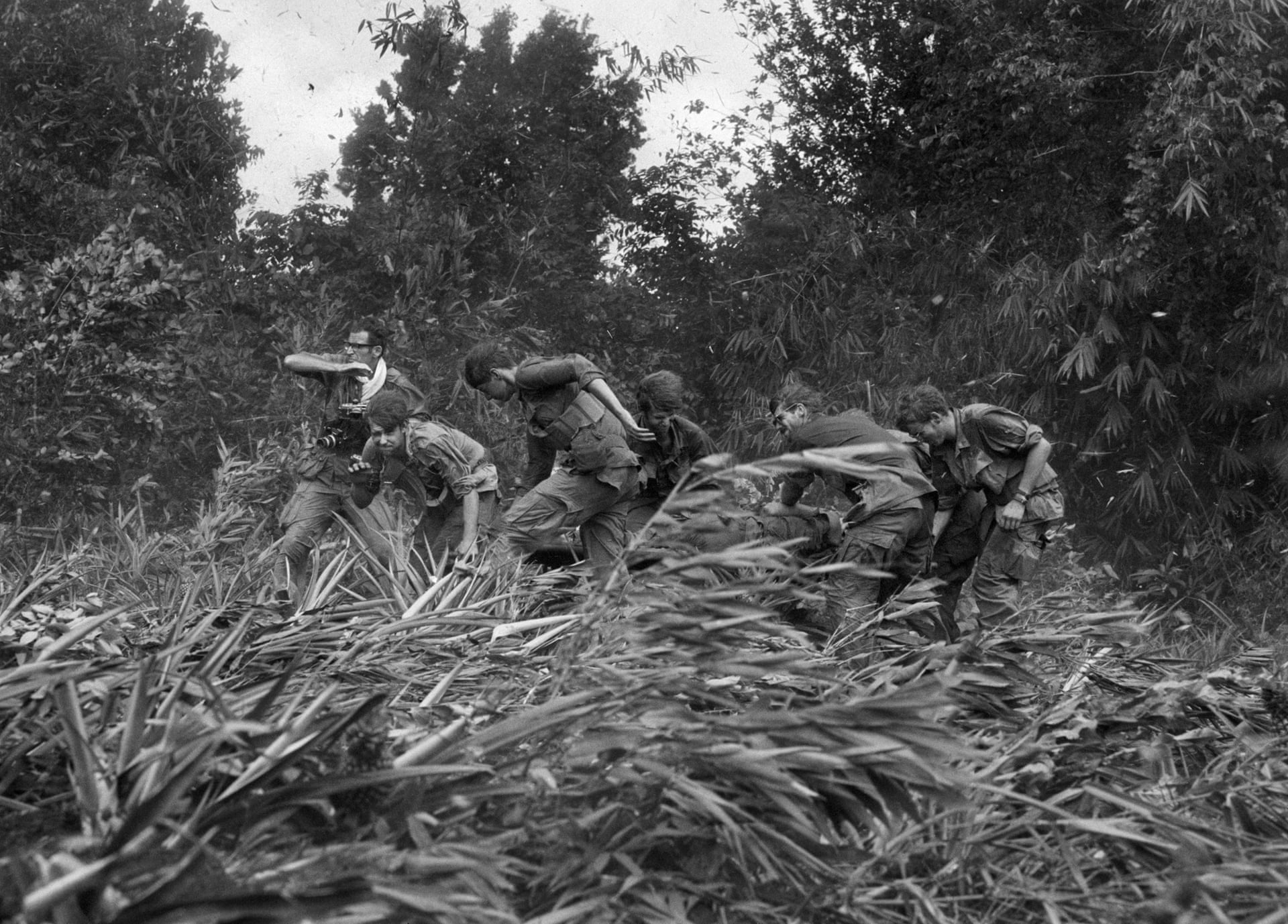
1970. Larry Burrows (far left) struggles through elephant grass to help GIs carry a wounded soldier to an evacuation helicopter in Mimot, Cambodia. Burrows was killed on 10 February, 1971, along with the photographer who took this picture, Henri Huet, and two other photojournalists, Kent Potter of UPI and Keisaburo Shimamoto for Newsweek, when their helicopter was shot down over Laos: photo by Henri Huet/AP via The Guardian, 23 April 2015

Severely burned in an aerial napalm attack, children run screaming for help down Route 1 near Trang Bang, followed by soldiers of the South Vietnamese army’s 25th Division, on 8 June 1972. A South Vietnamese plane seeking Vietcong hiding places accidentally dropped its flaming napalm on civilians and government troops instead. Nine-year-old Kim Phuc had ripped off her burning clothes while fleeing. This photograph by Nick Ut received the 1973 Pulitzer prize for spot news photography: photo by Nick Ut/AP via the Guardian, 23 April 2015
Lima
A beautiful #FullMoon illuminating the sky of #Lima Peru tonight.#MoonLight #moon: image via Cath @diabetesabordo, 4 May 2015

#FullMoon & #sunset 3rd May #Lima #hombredeltiempo: image via josepipogarcia, 4 May 2015

#FullMoon & #sunset 3rd May #Lima #hombredeltiempo: image via josepipogarcia, 4 May 2015

#FullMoon & #sunset 3rd May #Lima #hombredeltiempo: image via josepipogarcia, 4 May 2015

#FullMoon & #sunset 3rd May #Lima #hombredeltiempo: image via josepipogarcia, 4 May 2015
MUERTE AL ESTAD---

#Lima, #Peru, 28.04.15: Demonstration against the #TiaMaria copper mine in #Arequipa & against state repression.: image via Insurrection News @InsurrectionNews, 29 April 2015

#Lima, #Peru, 28.04.15: Demonstration against the #TiaMaria copper mine in #Arequipa & against state repression.: image via Insurrection News @InsurrectionNews, 29 April 2015

#Lima, #Peru, 28.04.15: Demonstration against the #TiaMaria copper mine in #Arequipa & against state repression.: image via Insurrection News @InsurrectionNews, 29 April 2015

#Lima, #Peru, 28.04.15: Demonstration against the #TiaMaria copper mine in #Arequipa & against state repression.: image via Insurrection News @InsurrectionNews, 29 April 2015
Based on 1) undisputable acumen
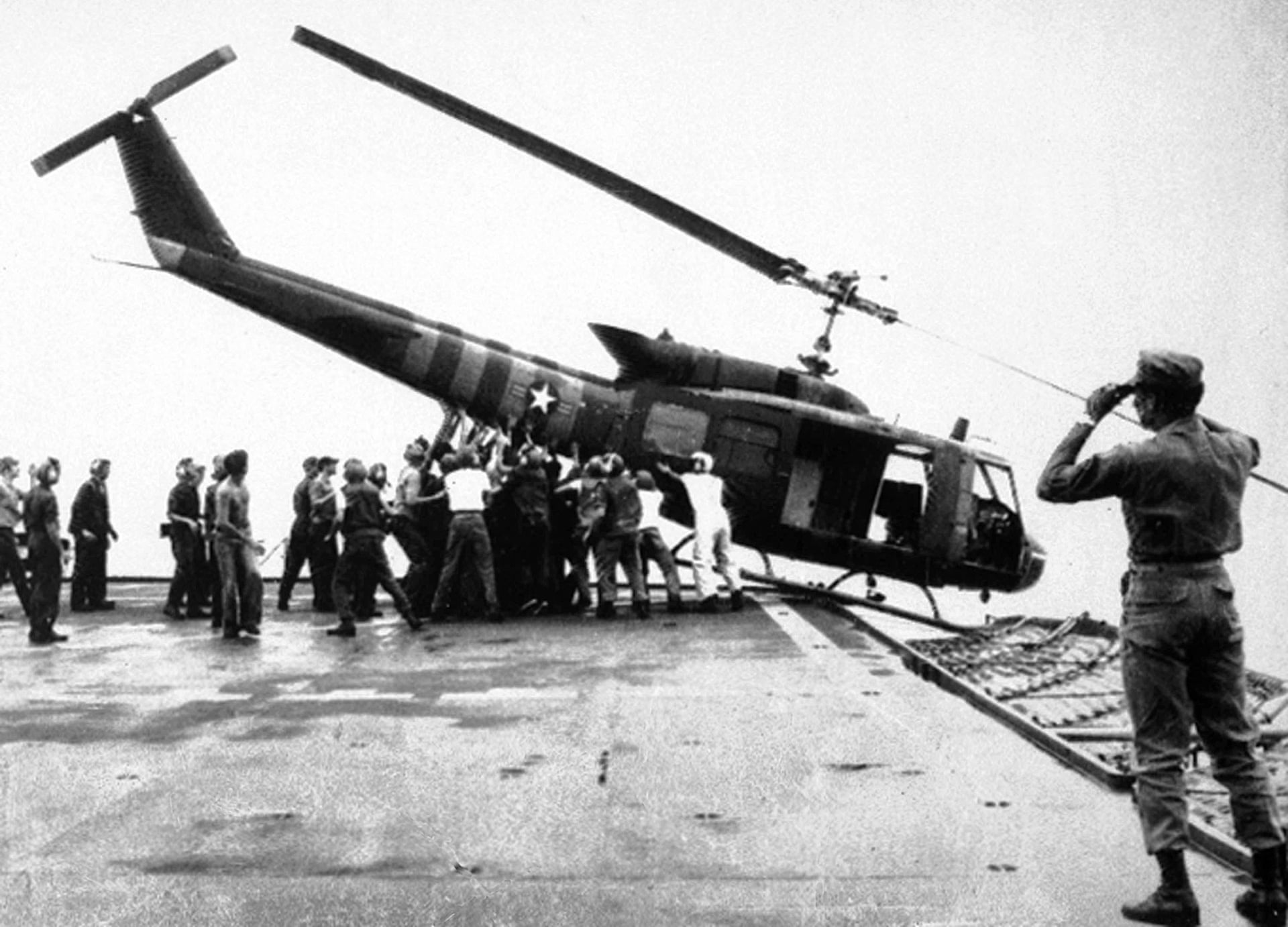
29 April 1975: US Navy personnel aboard the USS Blue Ridge push a helicopter into the sea off the coast of Vietnam in order to make room for more evacuation flights from Saigon: photo by AP via the Guardian, 20 April 2015

A CIA employee helps Vietnamese evacuees on to an US helicopter on a rooftop in Saigon on 29 April 1975: photo by Corbis/Bettmann/Reuters via the Guardian, 20 April 2015
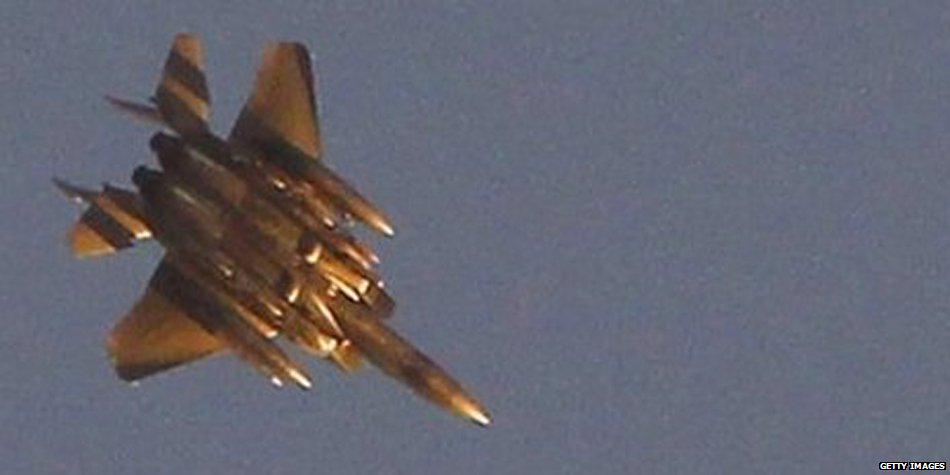



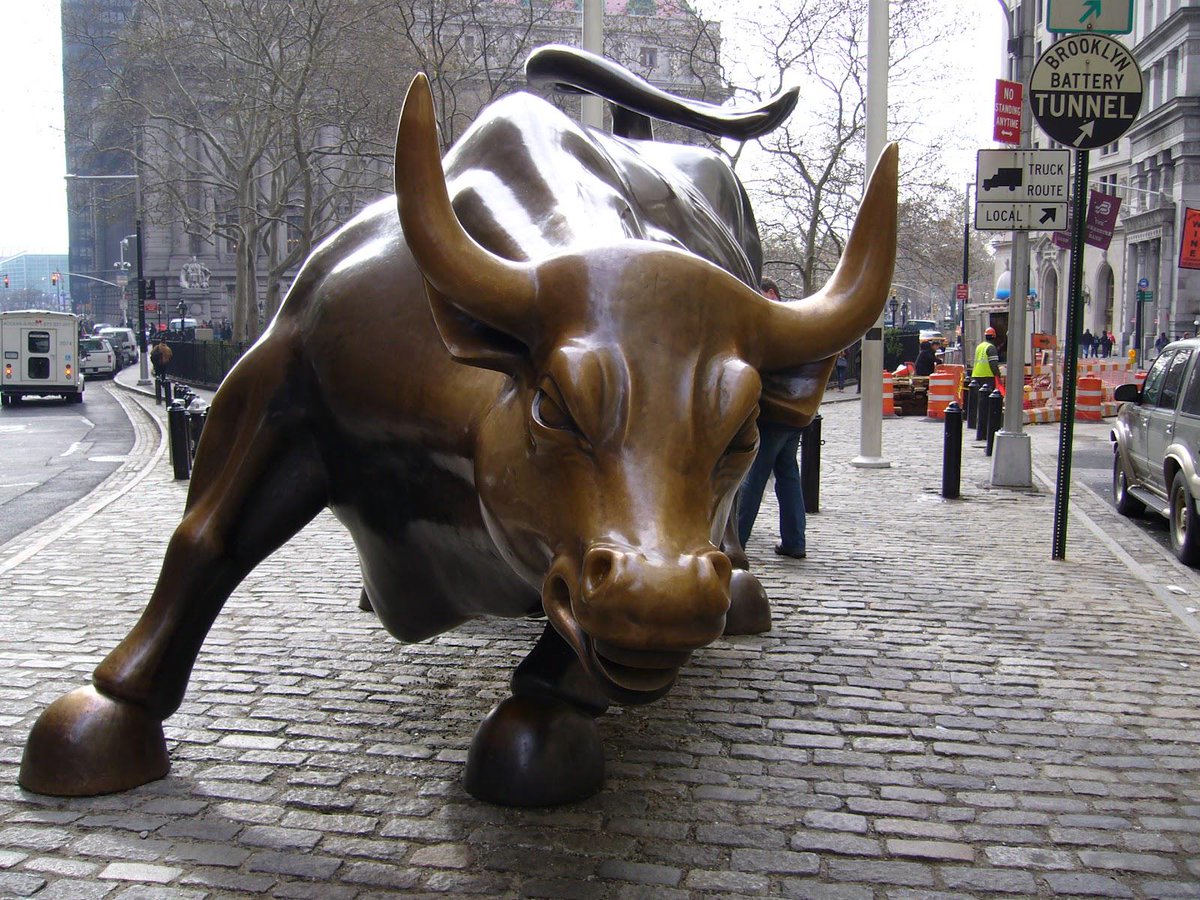
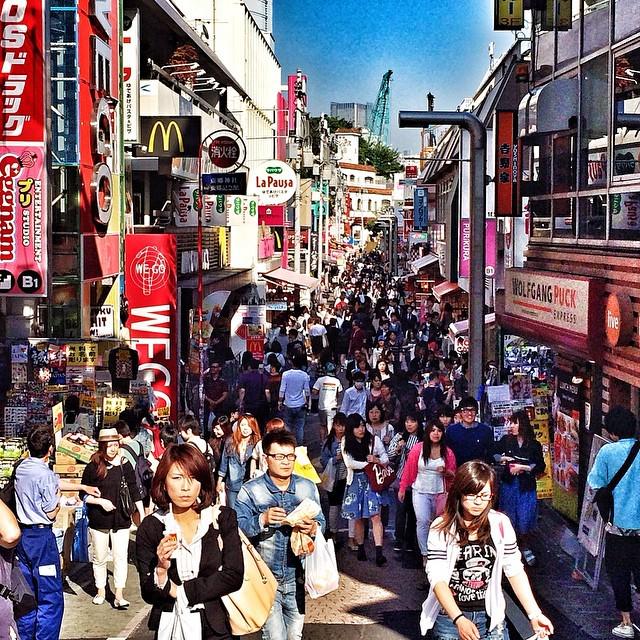


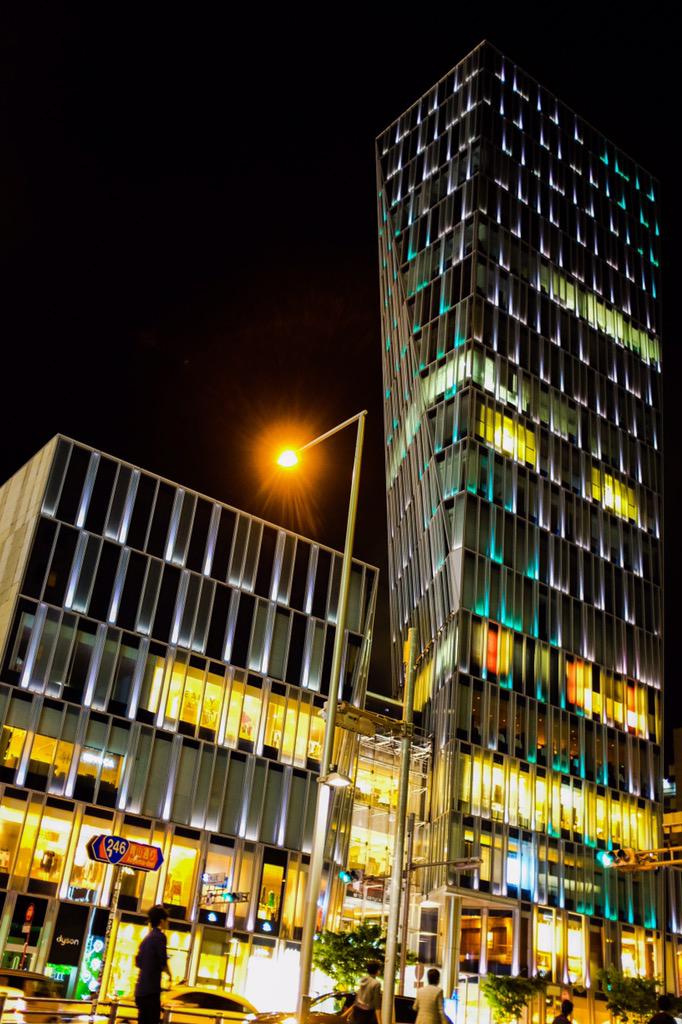
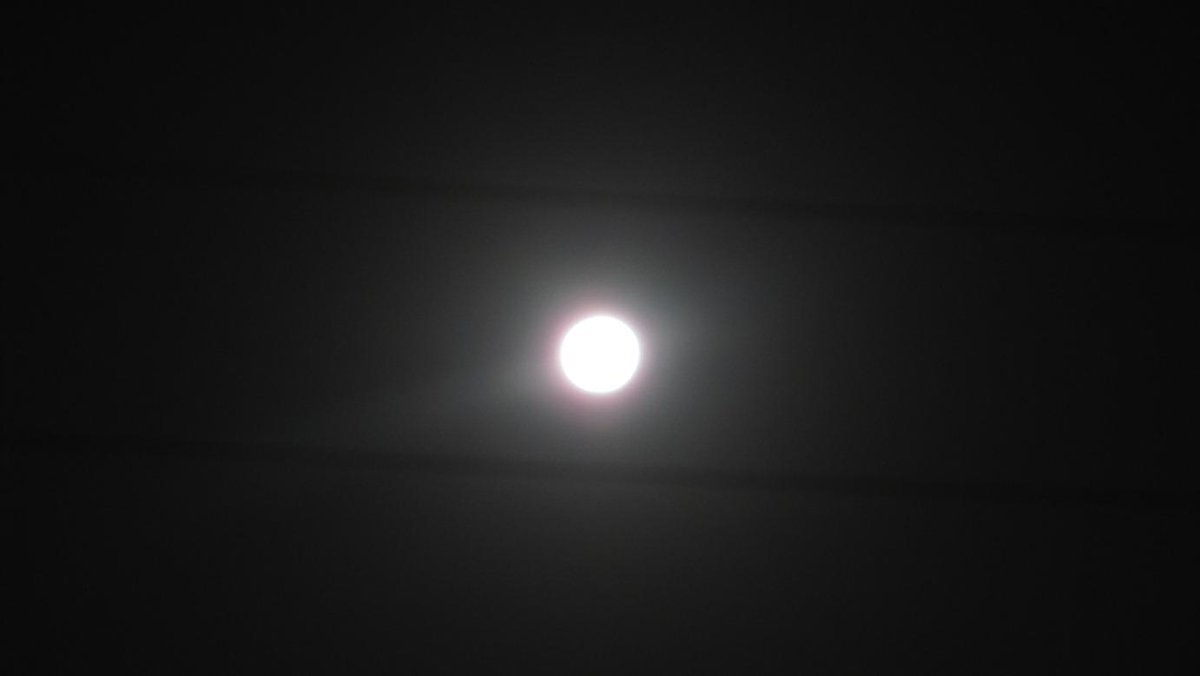
You've perfected the graphic visual commentary/pas de deux with unnerving acumen. Us be glad, despite the bull market wars.
ReplyDeleteUs happy to be alive on same planet as Hilton, a one-man walking stock market correction if there ever was one.
ReplyDeleteMaybe should not forget to mention here that Lorenzo immigrated with his family from Panama at the age of eight, went into the Navy after graduating from Queens College in 1971 and was posted to Vietnam as a "military adviser". He survived two years of that, suggesting that here, as elsewhere in his shamefully undervalued work, he knows whereof he speaks.
the first line of the thomas's poem seems to me to be inspired by the poem robert frost recited at jfk's inauguration, and indeed thomas's title clinches it, i think -
ReplyDeletethomas's text and your choice of images show us how foreign the 'new england settlers' mythos was to the world's experience of america in the 20th century
nations, to the extent that they have actual existence beyond their significance as granfalloons, are also governed by buddha's five contemplations - it is not possible to escape:
aging
illness
death
change and separation from all that is held dear
the consequences of one's good and evil actions
it hard out here for someone trying to find worthwhile activity, tasty and nourishing food, a comfortable place to read an interesting book, and unselfish love
The choice of images in the Lorenzo Thomas poem reflects the subject matter of the poem, which in turn has to do with the fact that the poet had served as a "military adviser" in Vietnam; the experience of that service likely informed the ironies which give the poem its critical force.
ReplyDeleteThe poem Frost recited at the inauguration had been written twenty years earlier. He had come to the podium prepared to read a 42 line poem composed for the occasion, but on that fiercely bright and cold winter day the wind and glare made it impossible to manage. As Frost fumbled at the podium, Richard Nixon stepped forward and attempted to shade his eyes with the poet's top hat. No go. So Frost changed plan on the spot and recited a poem he knew by heart, “The Gift Outright," which he called “a history of the United States in a dozen [actually, it was sixteen] lines of blank verse.”
Kennedy had inquired whether Frost planned to recite a new poem. If not, JFK suggested, would he recite “The Gift Outright," a poem Frost called “a history of the United States in a dozen [actually, sixteen] lines of blank verse”? (Kennedy had also suggested changing a phrase in the poem's last line to “such as she will become” from the somewhat less positive “such as she would become,” and Frost had agreed to insert the change).
Robert Frost at JFK inauguration, 20 January 1961
Robert Frost: The Gift Outright (1941) (recited at John F. Kennedy's Inauguration)
The land was ours before we were the land’s
She was our land more than a hundred years
Before we were her people. She was ours
In Massachusetts, in Virginia,
But we were England’s, still colonials,
Possessing what we still were unpossessed by,
Possessed by what we now no more possessed.
Something we were withholding made us weak
Until we found out that it was ourselves
We were withholding from our land of living,
And forthwith found salvation in surrender.
Such as we were we gave ourselves outright
(The deed of gift was many deeds of war)
To the land vaguely realizing westward,
But still unstoried, artless, unenhanced,
Such as she was, such as she will become.
"On that gusting day of the inauguration of the young emperor, the sublime Augustan moment of a country that was not just a republic but also an empire, no more a homespun vision of pioneer values but a world power, no figure was more suited to the ceremony than Robert Frost. He had composed a poem for the occasion, but he could not read it in the glare and the wind, so instead he recited one that many had heard and perhaps learned by heart.
ReplyDeleteThe land was ours before we were the land's.
She was our land more than a hundred years
Before we were her people.
"This was the calm reassurance of American destiny that provoked Tonto's response to the Lone Ranger. No slavery, no colonization of Native Americans, a process of dispossession and then possession, but nothing about the dispossession of others that this destiny demanded. The choice of poem was not visionary so much as defensive. A Navajo hymn might have been more appropriate: the "ours" and the "we" of Frost were not as ample and multihued as Whitman's tapestry, but something as tight and regional as a Grandma Moses painting, a Currier and Ives print, strictly New England in black and white.
"By then as much an emblem of the republic as any rubicund senator with his flying white hair, an endangered species like a rare owl, there was the old poet who, between managing the fluttering white hair and the fluttering white paper, had to recite what sounded more like an elegy than a benediction. "The land was ours before we were the land's" could have had no other name, not only because he was then in his old age, but because all his spirit and career, like Thomas Hardy's, lurched toward a wintry wisdom."
-- Derek Walcott, 1996
But if the ideology of manifest destiny touches The Gift Outright, a cruder form of the same ideology suffocates the poem Frost had writ for the occasion, but could not perform, which has such passages as:
ReplyDeleteWe see how seriously the races swarm
In their attempts at sovereignty and form.
They are our wards we think to some extent
For the time being and with their consent,
To teach them how Democracy is meant.
Here's the whole of Frost's intended Inaugural Ode:
Robert Frost: Dedication (written for John F. Kennedy's inauguration)
Summoning artists to participate
In the august occasions of the state
Seems something artists ought to celebrate.
Today is for my cause a day of days.
And his be poetry’s old-fashioned praise
Who was the first to think of such a thing.
This verse that in acknowledgement I bring
Goes back to the beginning of the end
Of what had been for centuries the trend;
A turning point in modern history.
Colonial had been the thing to be
As long as the great issue was to see
What country’d be the one to dominate
By character, by tongue, by native trait,
The new world Christopher Columbus found.
The French, the Spanish, and the Dutch were downed
And counted out. Heroic deeds were done.
Elizabeth the First and England won.
Now came on a new order of the ages
That in the Latin of our founding sages
(Is it not written on the dollar bill
We carry in our purse and pocket still?)
God nodded his approval of as good.
So much those heroes knew and understood,
I mean the great four, Washington,
John Adams, Jefferson, and Madison
So much they saw as consecrated seers
They must have seen ahead what not appears,
They would bring empires down about our ears
And by the example of our Declaration
Make everybody want to be a nation.
And this is no aristocratic joke
At the expense of negligible folk.
We see how seriously the races swarm
In their attempts at sovereignty and form.
They are our wards we think to some extent
For the time being and with their consent,
To teach them how Democracy is meant.
“New order of the ages” did they say?
If it looks none too orderly today,
‘Tis a confusion it was ours to start
So in it have to take courageous part.
No one of honest feeling would approve
A ruler who pretended not to love
A turbulence he had the better of.
Everyone knows the glory of the twain
Who gave America the aeroplane
To ride the whirlwind and the hurricane.
Some poor fool has been saying in his heart
Glory is out of date in life and art.
Our venture in revolution and outlawry
Has justified itself in freedom’s story
Right down to now in glory upon glory.
Come fresh from an election like the last,
The greatest vote a people ever cast,
So close yet sure to be abided by,
It is no miracle our mood is high.
Courage is in the air in bracing whiffs
Better than all the stalemate and’s and ifs.
There was the book of profile tales declaring
For the emboldened politicians daring
To break with followers when in the wrong,
A healthy independence of the throng,
A democratic form of right divine
To rule first answerable to high design.
There is a call to life a little sterner,
And braver for the earner, learner, yearner.
Less criticism of the field and court
And more preoccupation with the sport.
It makes the prophet in us all presage
The glory of a next Augustan age
Of a power leading from its strength and pride,
Of young ambition eager to be tried,
Firm in our free beliefs without dismay,
In any game the nations want to play.
A golden age of poetry and power
Of which this noonday’s the beginning hour.